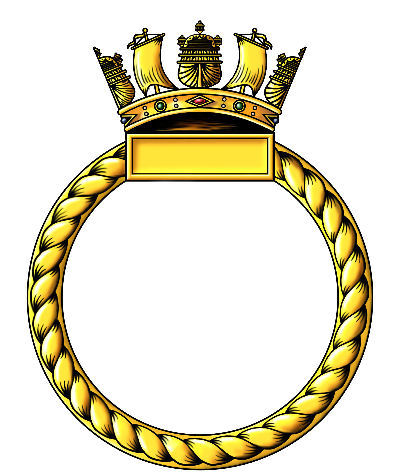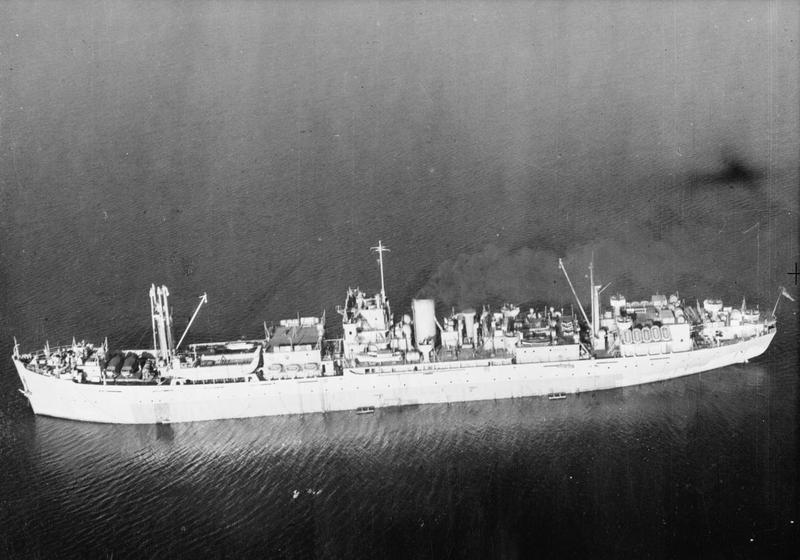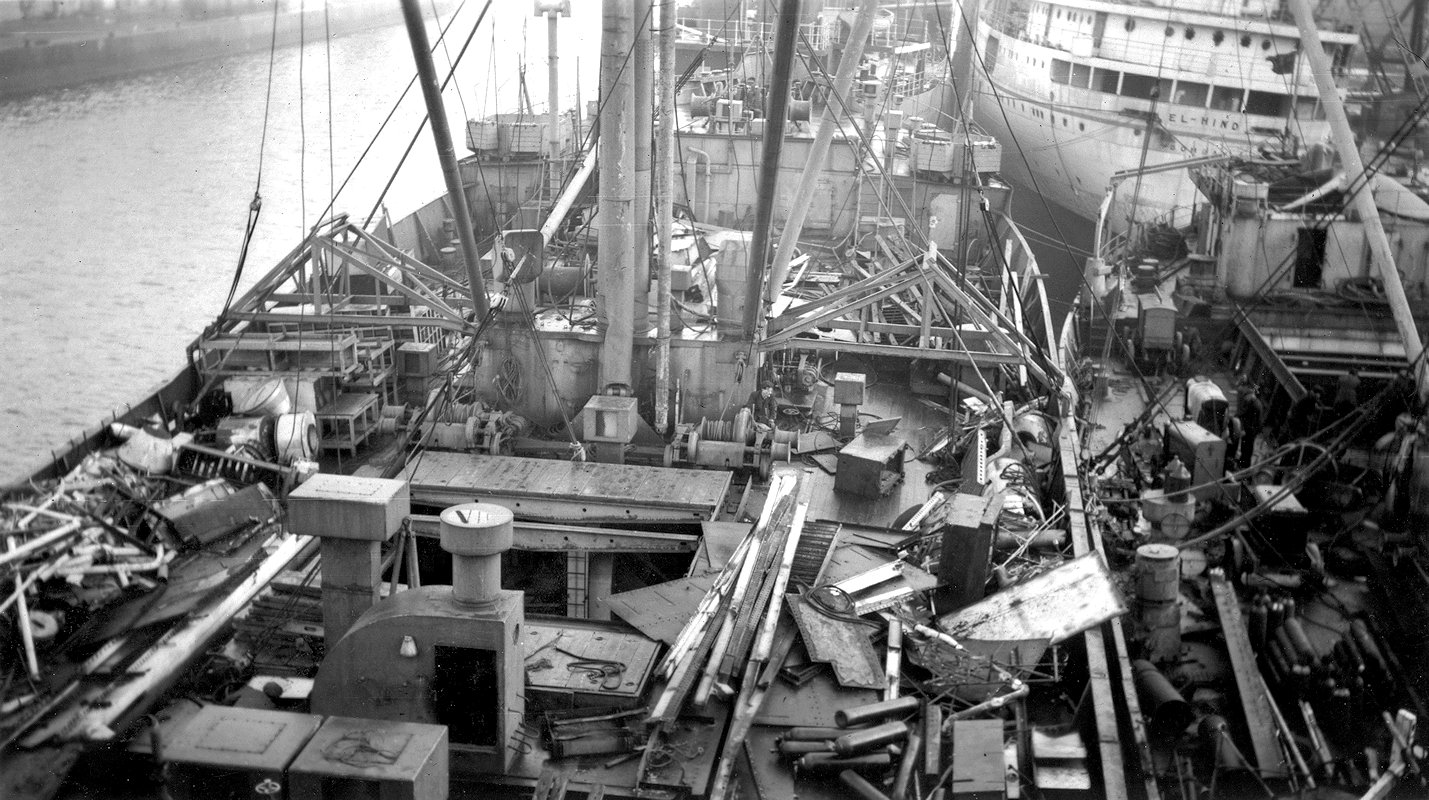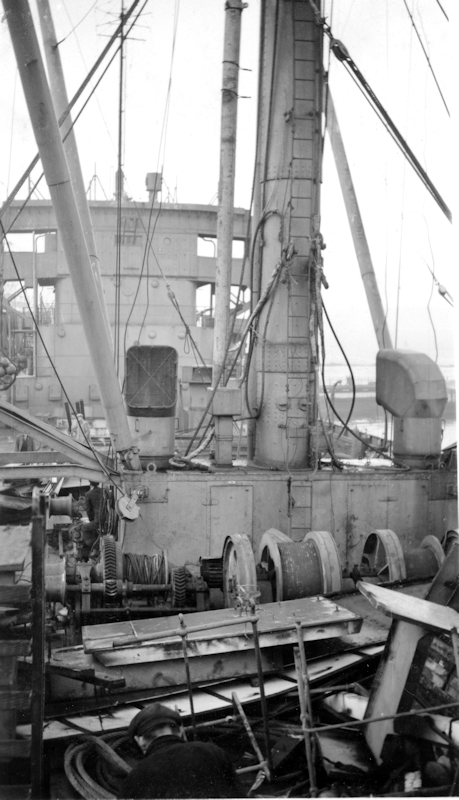Aircraft Component Repair Ship

No badge issued for this vessel
Battle Honours
None
Specifications
Builder: William Gray & Co. Hartlepool, United Kingdom
Displacement: 6,924 tons
Length: 431 ft
Beam: 56 ft
Draught: 26 ft 6 in
Speed: 11 Knots
Crew complement: 450+
Commanding Officers
Cdr. D M McLean, RNR 9 Jul 1945
Cdr. (ret) Leslie Rodney Sharp, RD, RNR 1 Aug 1945
Related items
None
Reminiscences
None
Gallery
None
H.M.S. CUILLIN SOUND

No images of CUILLIN SOUND available - this is her sister ship HOLM SOUND at sea after completion. Photo: © IWM (FL 13933)
Early history
Her keel was laid down as Yard Number 1171, at William Gray & Co. Ltd, West Hartlepool. on January 7th 1944 for the Admiralty as an Airframe Repair Ship. She was one of five 'Moray Firth' class repair ships building in British yards (BEAULY FIRTH, CUILLIN SOUND, HOLM SOUND, MORAY FIRTH and SOLWAY FIRTH) that were planned as Aviation Repair Ships for deployment with the Fleet Train of British Pacific Fleet (BPF).
She was launched on November 2nd 1944, she was completed by William Gray & Co Ltd in January 1945 and moved up the coast to South Sheilds1 to be outfitted with specialist workshops and equipment for the support of American(?)2 airframe types Grumman Avenger, Voight Corsair, and Grumman Hellcat . Like her sitter ships of the 'Moray Firth' class CUILLIN SOUND carried two large twin engined lighters for ferrying airframes to and from the aircraft carriers or from shore bases.
She commissioned as HMS CUILLIN SOUND on July 9th 1945, Commander D. M. McLean RD, RNR in command. She was named for the deep channel which separates the islands of Skye and Soay from Rum and Canna in the Inner Hebrides.
Allocated to the British Pacific Fleet
There is no record of her sailing from the UK. The July 1945 Navy List details 16 officers appointed to the ship.
Disposal
In 1946 she was placed in the Reserve Fleet at Harwich, as HQ ship of the Senior Officer. She was placed on the disposal list in 1947 and sold to the Margareta Steamship Company, Limited, of Greenock, (Clunies Shipping Co.), and converted early in 1948 into a cargo ship and renamed JAMES CLUNIES. On April 21st 1949 she ran aground and was lost on Punta Mogotes Spit, Argentina, on passage Bahia Blanca for Italy with grain.

The fore deck of the former HMS CUILLIN SOUND at Greenock in February 1948 while refitting as the S.S. JAMES CLUNIES. Photo courtesy Mr. Alan Graham

View aft from the fore deck of the former HMS CUILLIN SOUND at Greenock in February 1948 while refitting as the S.S. JAMES CLUNIES. Photo courtesy Mr. Alan Graham.
Notes:
1. Moved to an un-named shipyard for outfitting, most of her crew joined her at South Shields.
2. Records are sketchy for the six Aviation Repair Ships built for the Fleet Air Arm, however there ware two distinct types – Component repair, and Engine Repair. It is highly probable that these ships specialised in either British or American types. What evidence exists suggests the following assignments:
Deer Sound = Component*
Holm Sound = Component* British airframes and component types
Cuillin Sound = Component
Beauly Firth = Engine* - British in-line Engines
Moray Firth = Engine* - British in-line Engines
Solway Firth = Engine* - American Radial engines?
*See AFO 7521/45 —Complement Amendments (N/G.013545/45.—27 Dec. 1945.) which states:
H.M. Ships “Beauly Firth” , “Moray Firth” and “Solway Firth” as Aircraft Engine Repair Ships (Admiralty Letter N.15743/44 of 5 July, 1944).
H.M.S. “Deer Sound” as Aircraft Component Repair Ship (Admiralty Letter N .29837/43 of 7 March, 1944).
H.M.S. “Holm Sound” as Aircraft Component Repair Ship (Admiralty Letter N .32706/44 of 8 January 1945).
3. Originally an appeal made by the Lord Mayor of Melbourne in September 1945 to send food to Britain in Mercy Food Shipments. The appeal became nation-wide but was still called the Lord Mayor's Food for Britain appeal.
Last modified: 23 February 2023
Primary information sources
Additional sources:
Comments (0)